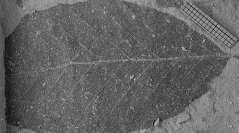

 Comptes Rendus Palevol
6 (6-7) - Pages 515-525
Comptes Rendus Palevol
6 (6-7) - Pages 515-525The chemical composition of fossil plants can provide useful data for taxonomy and palaeoecological reconstructions. The Upper Valdarno Basin deposit (central Italy) shows a great diversity of well-preserved fossils. The first results of the analysis of Pliocene Fagus leaf lipids are reported here. Series of long chain aliphatic lipids (n-alkanes, n-alcohols, n-aldehydes, n-ketones) dominated the extract. Their distributions differ for the fossil and the extant European beech, suggesting that they may belong to different species. The occurrence of compounds sensitive to degradation such as n-aldehydes and monoglycerids shows the excellent chemical preservation of the fossils. Two long-chain n-alkyl-1,15-diols were identified. They may come from Eustigmatophyceae microalgae, and their occurrence is in agreement with a freshwater deposit ion environment. Various polycyclic terpenoids were detected (e.g., native plant sterols, triterpenoids of the oleanane type). The occurrence of compounds that do not correspond to Fagus lipids is discussed.
Chemotaxonomy, Diols, Fagus, lipids, monoglycerids, Middle Pliocene, Upper Valdarno, Italy